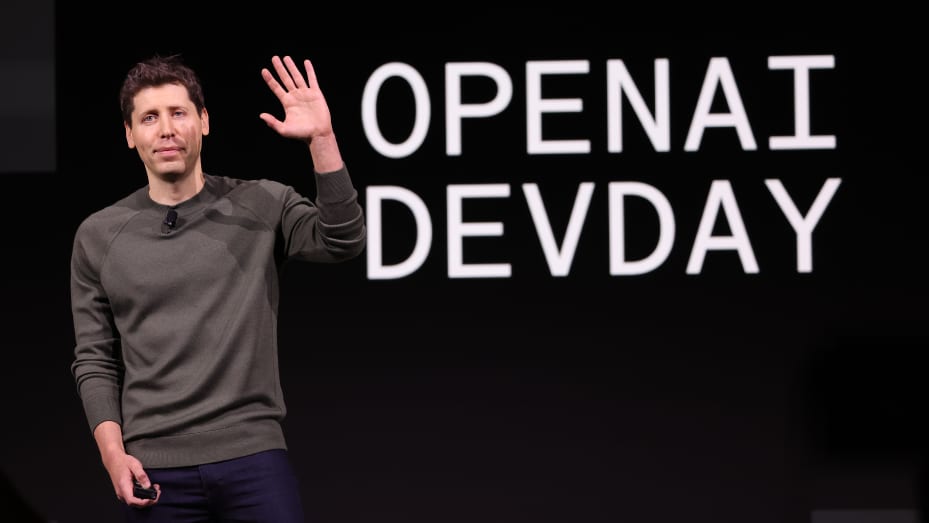In what unfolded like a script from a corporate thriller, OpenAI, the artificial intelligence pioneer, recently experienced a significant shake-up. The saga began with the firing of its high-profile CEO, Sam Altman, and spiraled into a series of events that rocked the foundations of the AI community.

Table of Contents
The Unexpected Ousting
The drama started with a sudden move by OpenAI’s board of directors to fire Sam Altman, the former Y Combinator president. This decision sent shockwaves throughout the company, leading to the resignation of co-founder Greg Brockman and three senior researchers. The reasons behind this drastic action were not immediately clear, but the implications were immediate and profound.
The Main Reason : The Helen Toner Factor
Central to Altman’s dismissal was the role of board member Helen Toner. Reports suggest that Altman’s attempt to remove Toner was pivotal to his ousting. This decision was reportedly influenced by a paper co-authored by Toner, which Altman deemed overly critical of OpenAI. This incident highlighted underlying tensions and differing visions within the organization, significantly contributing to the unfolding drama.
A critical element in the drama was the role of Helen Toner, a board member of OpenAI. Reports indicate that Sam Altman’s efforts to remove Toner from the board were a significant factor in the turmoil. The reason behind this move was a paper co-authored by Toner, which Altman perceived as being overly critical of OpenAI. This attempt to oust Toner was not isolated but part of a larger narrative that painted a picture of internal disagreements and differing visions for the future of OpenAI. The fallout from this action was immediate and significant, contributing to Altman’s initial firing and setting off a chain of events within the company.
Employee Backlash and a Brief Stint at Microsoft
The firing of Altman stirred discontent among OpenAI’s workforce. Nearly 500 out of 770 employees threatened to resign unless the board reinstated Altman. During this period, Altman and his colleagues announced an intention to join Microsoft, though this plan was not finalized, reflecting the fluidity of the situation.
Turnaround and Return
In a surprising twist, OpenAI and Altman reached an agreement for his return as CEO. The new board included renowned figures like Bret Taylor, Larry Summers, and Adam D’Angelo. This resolution came amidst pressure from investors and internal stakeholders, all advocating for Altman’s return.
Governance, Communication Breakdown, and Corporate Impact
The incident had far-reaching effects on OpenAI’s corporate structure and governance. OpenAI’s management acknowledged a breakdown in communication between Altman and the board, leading to the initial firing. This period of uncertainty also raised concerns about OpenAI’s financial standing, including the potential impact on the valuation of the company’s employee shares, which were slated for sale.
The Road Ahead
As Altman reassumes leadership, the focus shifts to how OpenAI will navigate these challenges. The events have underscored the complexity of corporate governance, employee loyalty, investor influence, and strategic directions in the burgeoning AI industry. Altman’s return, conditioned on significant governance changes, marks a new chapter for OpenAI, one that will be closely watched by the tech community and beyond.
The Future Under Altman’s Leadership
With Sam Altman back at the helm of OpenAI, there is heightened anticipation around the company’s upcoming projects, especially in the realms of GPT (Generative Pre-trained Transformer) technology. Altman, in the initial stages of his tenure, had announced ambitious plans for OpenAI, which included the development of new GPT updates and the launch of groundbreaking initiatives like the GPT Store and Assistant API.
These projects, part of Altman’s vision to democratize AI technology, are expected to revolutionize how businesses and individuals interact with AI. The GPT Store aims to provide a platform for developers and creators to build and share AI-powered applications, leveraging the advanced capabilities of OpenAI’s models. Meanwhile, the Assistant API is anticipated to offer more streamlined and intuitive ways for integrating AI assistance into various digital platforms.
Altman’s return has raised expectations about the acceleration and successful execution of these projects. There is a keen interest in how he will navigate the challenges of innovation while managing the internal dynamics and governance at OpenAI. The AI community is eagerly watching to see if Altman will continue to push the boundaries of AI technology and bring his bold visions to fruition.
Conclusion
As OpenAI embarks on this new chapter, the focus is not only on its internal restructuring but also on its potential to continue leading in AI innovation. Sam Altman’s leadership is crucial in this journey, and his decisions will likely shape the future trajectory of both OpenAI and the broader AI landscape.
